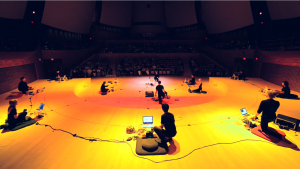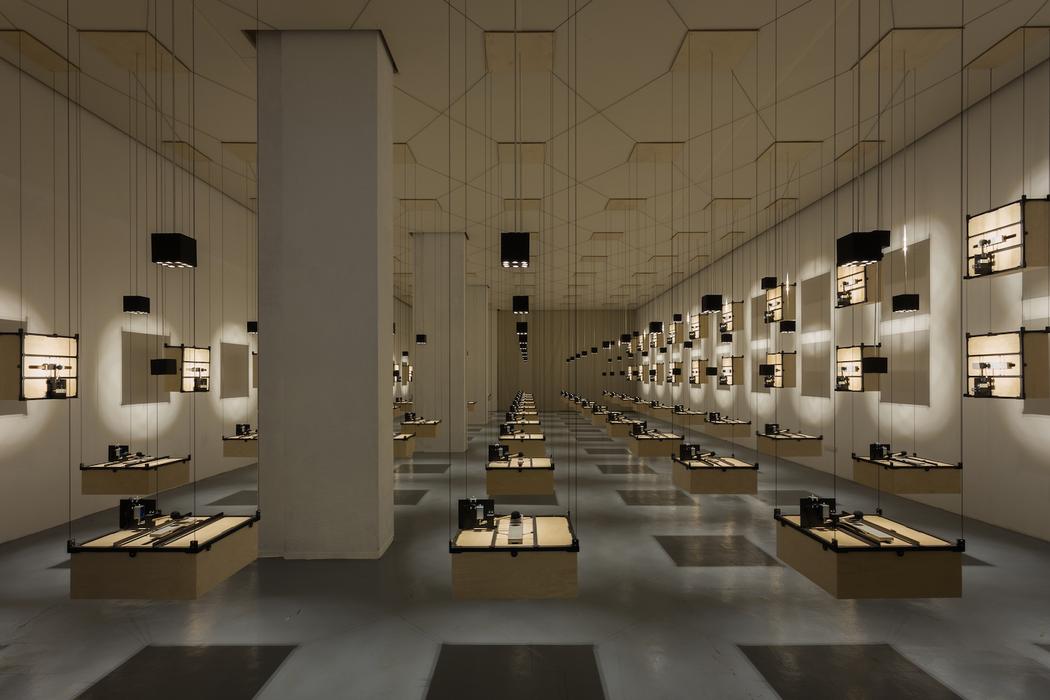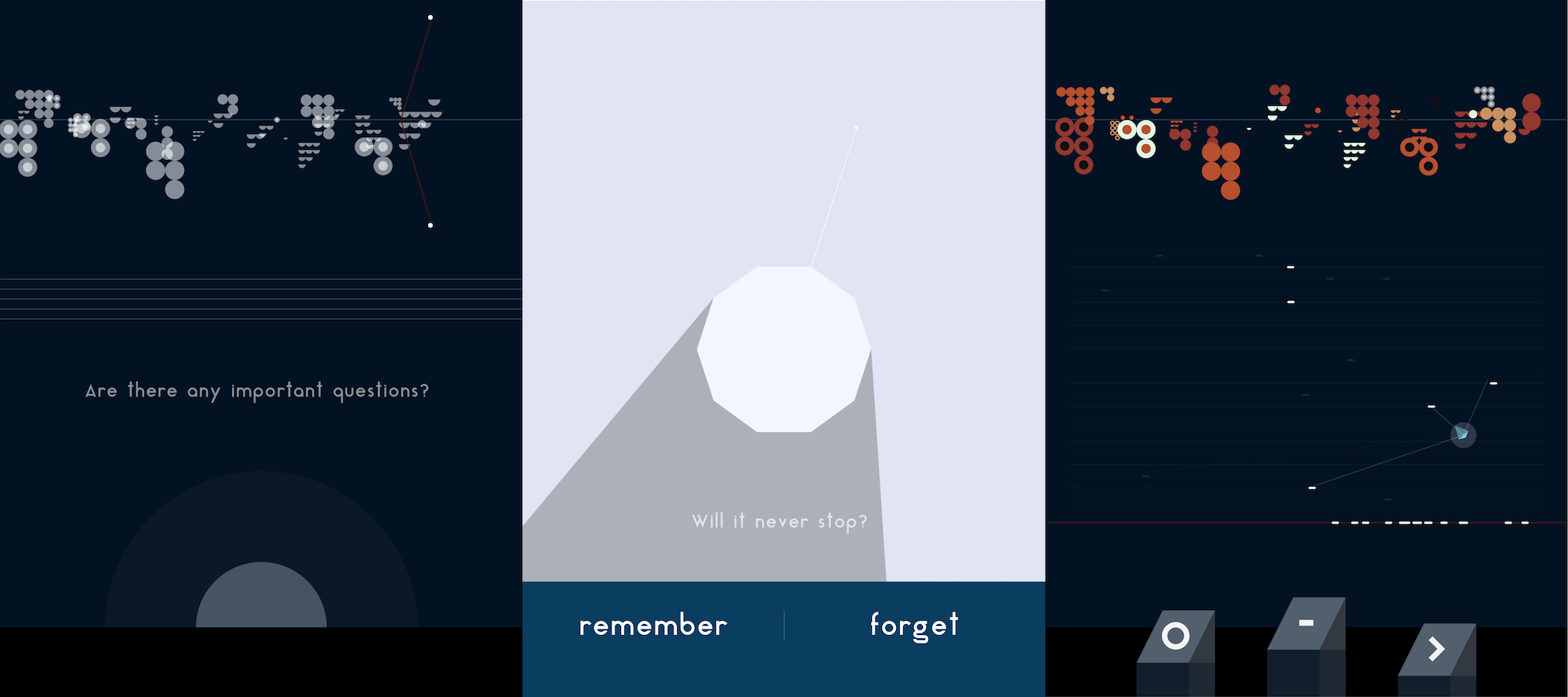Caption: A video documentation, filmed in Montreal, Québec, of Mesa Musical Shadows (2016), an interactive musical pavement.
Mesa Musical Shadows is an interactive art related to computational music by Daily Tous Les Jours studio, an interaction design studio with a focus on work in public spaces. This project was inspired by a mix of performance, musical instruments, and digital arts, using contemporary tools such as sensors and real-time data. The artists wanted passing crowds to be invited to play a critical role in the transformation of their environment and their relationships. The creator’s artistic sensibilities manifest in the final form by using bright geometrically tiled surfaces that make the piece more inviting for the audience. The piece allows shadows to cast with the sensor, where sounds and melodies are projected by speakers. The sensors are controlled by a MaxMSP patch linking Arduino Mega boards via OSC and are constantly recalibrate themselves in order to define new threshold values to determine what is a shadow and what is not.
The shadows cast on different tiles, which trigger different voices, all singing in harmony. Additionally, the music dependent on the weather and the time of the day (due to variations of the lengths of the shadows). I thought that this project was very intriguing because the artists let the audience compose the music and are welcomed by a moment of surprise and an invitation to engage with the piece, as well as interact with other visitors and passersby. I believe that music is a language that is universal, and it is really exciting to see art and music collaborate in order for the community to come together as well.
![[OLD FALL 2018] 15-104 • Introduction to Computing for Creative Practice](https://courses.ideate.cmu.edu/15-104/f2018/wp-content/uploads/2020/08/stop-banner.png)







